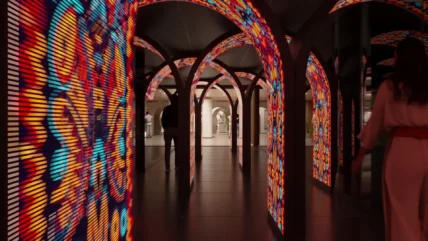Sugar Valley
How Sugar Valley Redefined Our Approach to Architectural Animation
Preserving Sugar Mountain under a new name
When we first encountered the Sugar Valley project, we knew we weren’t just visualizing another mixed-use development. We were capturing the transformation of a Bavarian place with soul—where an abandoned concrete factory had become Munich’s beloved “Sugar Mountain,” hosting underground concerts, basketball games, and climbing sessions.
The challenge was: how do you honor a beloved space’s cultural DNA while showcasing its change and future potential?
Sugar Valley, with its new name, sits on a site rich with industrial heritage, combining former Siemens facilities with the iconic Katzenberger concrete plant. What made this project unique wasn’t just its scale—150,000 m² of mixed-use development—but the deliberate approach to architectural diversity. Rather than seeking uniformity, Salvis AG commissioned five internationally acclaimed firms—J. MAYER H, COBE, KCAP, SLA, and local landscape architect MGK—to create what they called a “colorful, multicultural neighborhood.”
Each building would carry its own architectural signature while contributing to a unified masterplan. The architects faced a specific challenge: preserving the functions and spirit of Sugar Mountain under a new name. The original concert venue would transform into a market hall, but the cultural and recreational character had to remain. With all car access routed through underground garages, the surface level would become entirely pedestrian, creating space for the community connections that had made Sugar Mountain special.
Every great animation starts with great music
This project pushed us beyond our conventional workflow. We developed what we called the “Dancing City” concept—architecture brought to life through movement and rhythm, synchronized to music. As Róbert, our project lead and Lead CG Artist, explained: “This was the first time we did something more abstract. We made everything move—even stuff that shouldn’t. That was the concept.”
The complexity began with the music itself. The client initially referenced “Sympathy for the Devil” by The Rolling Stones to guide the soundtrack’s direction and help us find the perfect song. As Róbert noted: “When we started the project with our suggested track, the artist wasn’t that famous yet. But by the time we finished, it had blown up on TikTok.” The sudden surge in popularity forced us to find an alternative with comparable energy—a creative constraint that ultimately led to a great outcome.
From industrial past to community future
Working with different architectural styles presented its own visual puzzle. Balancing the strong red market hall with exposed concrete, steel, and abundant greenery required careful attention to how materials interact on screen. The diversity that made the project conceptually rich could easily become visually chaotic. Every element needed purpose—even the bicycle shop wasn’t mere decoration but a deliberate emphasis on the car-free neighborhood vision.
The project evolved significantly during production. Beyond design changes, even the development’s name was updated—requiring us to remove LED panel graphics and rebrand elements throughout the animation.
Our approach pioneered early integration of 2D graphics as story-essential elements within 3D architectural visualization. We weren’t just showing buildings; we were creating an experience that captured the site’s transformation from industrial past to community future. This methodology influenced subsequent projects and established a new standard in our studio for thinking about developments as complex visual experiences combining music, scenes, graphics, mood, and creativity.
Massive files and polygon counts
The technical execution proved as challenging as the creative concept. Managing multiple buildings across 150,000 m² meant working with massive files and polygon counts that pushed our rendering capabilities. What seemed technically demanding then—between 2022 and 2024—we now consider small to medium scale, reflecting how rapidly our visualization capabilities and skills have advanced.
The animation prominently features public fountains, extensive green spaces, and human activity, showcasing the work-life integration that defines Sugar Valley’s vision. Every frame treats buildings as dynamic rather than static, creating rhythm and life that mirrors the community spirit the development and Salvis AG aim to foster.
This was purely marketing for an already-approved development, not a competition entry—representing a new trend in how developers present large-scale urban projects to the public. The impact extended beyond Sugar Valley itself. As Róbert shared: “We showed the animation to another client as reference—and they loved it so much they asked for something similar.”
The project required multiple revisions as development plans evolved, teaching us the importance of flexibility in long-term collaborations. But these challenges strengthened our approach, establishing the “Dancing City” methodology that continues to influence our work.
Sugar Valley taught us that architectural visualization and a 108-second-long animation aren’t just about showing spaces—it’s about capturing the soul of a mixed-use project, honoring what came before while celebrating what’s to come.
The concrete factory that once hosted underground concerts lives on, not in its original form, but in the community spirit that continues to define this remarkable place.
Project details
Location
Munich, Germany
Partner
Design
J. Mayer H.
COBE
KCAP
SLA
MGK
Team
Róbert Andrékó
Mariia Lazaryk
Matteo Piccini
Botond Sass
Ilus Varga
Links

